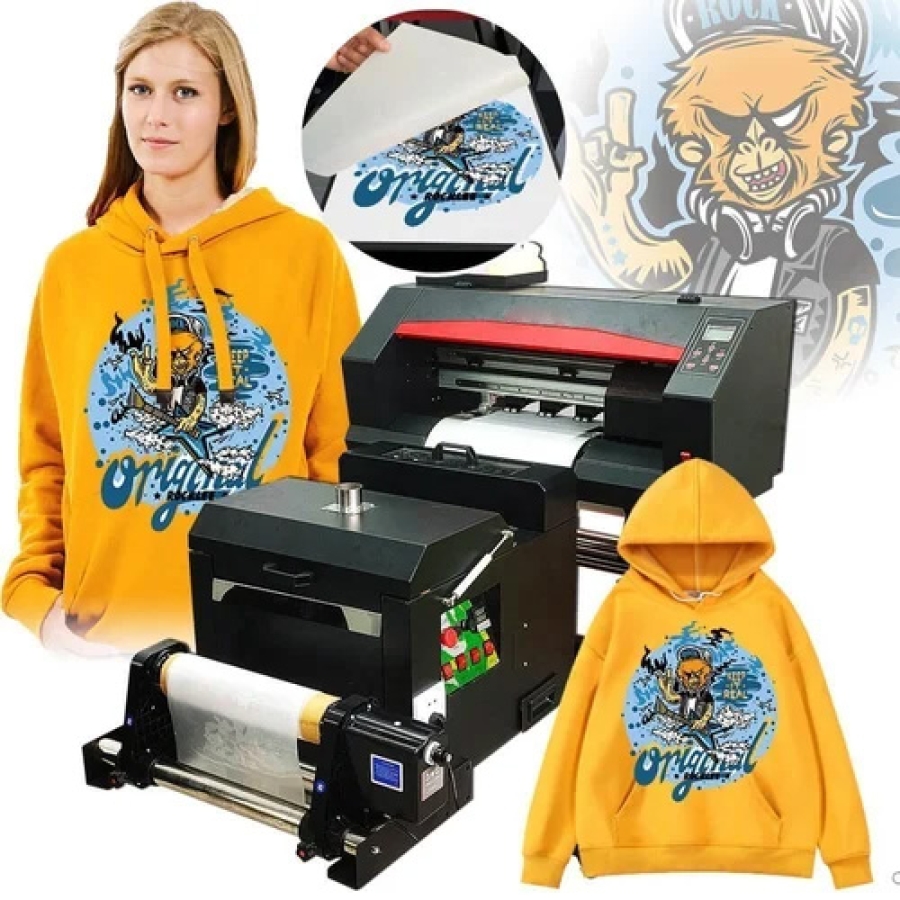Understanding DTF Printing: A Game-Changer for the Garment Industry.
Direct to Film (DTF) printing is rapidly becoming one of the most popular printing techniques for apparel and textiles. This cutting-edge method provides a flexible and cost-effective alternative to traditional techniques like screen printing, making it a perfect choice for modern garment customization.
But what exactly is DTF printing, and why is it gaining so much attention?
What is DTF Printing?
DTF printing involves creating designs on a specialized clear film, which is then transferred to fabric. The process is simple yet highly effective, allowing for vivid, high-quality prints on a variety of fabrics, no matter their color or composition. Whether you're working with cotton, polyester, silk, or even leather, DTF printing delivers.
Let’s take a closer look at how DTF works and why it’s becoming a go-to solution for businesses and hobbyists alike.
DTF Printing: A Step-by-Step Breakdown
DTF printing starts by printing a design directly onto a clear film using a DTF printer, which is loaded with special inks designed for the process. Once the design is printed, a powdered adhesive is applied to the still-wet ink. The film then moves through a shaker that removes any excess adhesive. Afterward, the design is cured and dried, making it ready for transfer.
The final step is to use a heat press to apply the design from the film to the fabric. This step combines heat, pressure, and precise timing to ensure a durable and flexible print that can withstand regular wear and washing.
Why Choose DTF Printing?
1. Unmatched Versatility
One of the standout features of DTF printing is its ability to adhere to almost any fabric type. From everyday cotton and polyester to more delicate materials like silk or robust fabrics like leather, DTF opens up endless possibilities for custom designs and branding.
2. High Quality and Durability
DTF prints are renowned for their vivid colors, sharp details, and resilience. Unlike other printing methods, DTF designs can stretch with the fabric, reducing the risk of cracking or fading over time. This makes it an ideal choice for garments that experience frequent use.
3. Cost-Effective for Smaller Print Runs
Screen printing often requires extensive setup, making it less cost-effective for smaller orders. DTF, on the other hand, is perfect for both large and small print runs. This flexibility makes it an excellent option for personalized orders, prototypes, and short-term promotional campaigns.
4. Environmentally Friendly
Another significant advantage of DTF printing is its eco-friendly nature. Compared to traditional printing methods, DTF uses minimal water and energy, making it a more sustainable choice for businesses focused on reducing their environmental footprint.
---
DTF printing is revolutionizing the garment industry with its versatility, quality, and eco-friendly benefits. Whether you're looking to create custom apparel for your brand or explore new design possibilities, DTF is an innovative solution worth considering.









